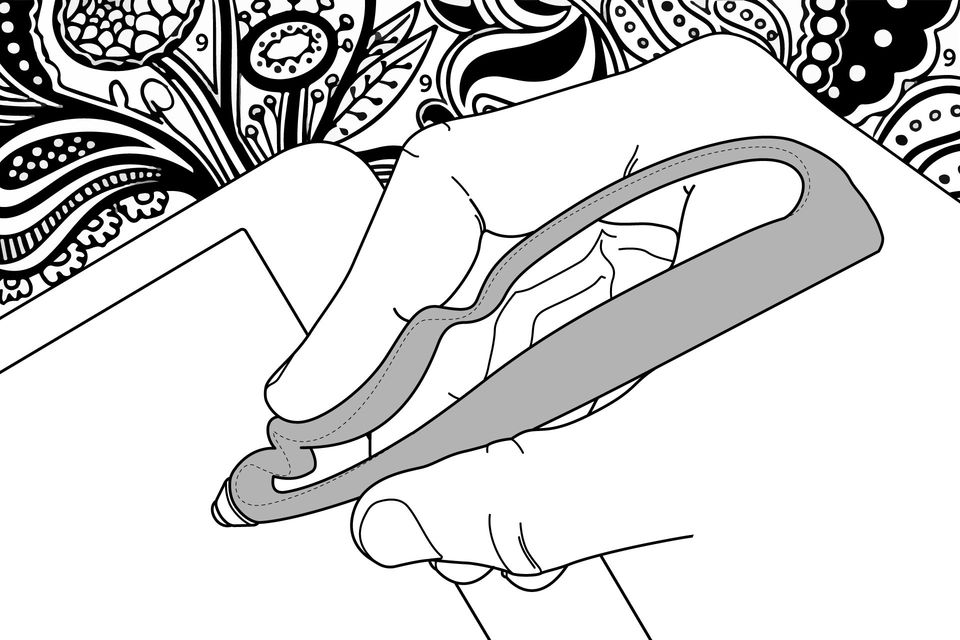Colouring books for adults: no longer just for kids
February 26, 2020
Colouring books are no longer just for kids - they've become a popular way for adults to achieve mindfulness and reduce stress.
Think back to your elementary school day, the days of recesses, snack time, crayons and simple joys. One of every child’s favourite pastimes was colouring in colouring books, either at school or at home. They would depict nature scenes, cartoon characters, and so much more. Blank outlines would invite you to fill in whatever colours your young heart desires. You had the freedom to colour the sky purple or the grass orange. They made have mostly been tools to improve fine motor skills, but most people just think back on them as fun.
But recently, you don’t have to turn to nostalgia to revisit the feeling of using a colouring book. These days, the new fad is adult colouring books that are designed, not for kids, but just for grown ups.
Kinds of Adult Colouring Books
While the ones you may remember as a kid involved TV cartoon characters and silly scenes, adult colouring books are designed for a more refined taste. They can include:
- Intricate flowers and butterflies
- Swirling abstract patterns like paisley
- Mandalas and Asian inspired art
- Detailed or realistic-looking animals
- Fun objects like hot air balloons
These artistic outlines go beyond colour-by-numbers and encourage grown ups to create flowing and beautiful works of art. There is a style for everyone. In addition to the ones above, there are also more niche colouring books or joke colouring books featuring hilarious comic scenes or celebrities.
Why Are They Popular?
For the past couple of years, adult colouring books have been everywhere and everyone has been talking about them. In 2015, about 12 million adult colouring books were sold in the US alone. Many entrepreneurs design their own colouring books by drawing the black and white art, print them, and sell them on Amazon or Etsy.
They are popular not only because of the nostalgia factor, but because they give adults (mainly millennials) a way to relax after a stressful day. The activity of colouring, getting lost in a soothing, repetitive, creative task, can be extremely mentally and emotionally therapeutic for many people.

Adult colouring books can even be good for physical ailments. Because of the way colouring benefits fine motor skills, people with limited mobility can strengthen the muscles in their arms and hands with colouring and find new strength. People use it as a tool against self harm, a way to fight depression or anxiety, and much more. There are even colouring book groups in libraries and cafes that bring people together to share their art and their stories.
Relaxing with colouring books can be compared to yoga or meditation in terms of its benefits. It can slow down the heart rate and respiration, stimulate the brain and relax tense muscles. It’s cheap, can be done almost anywhere, and you have a beautiful piece of art to show for your time.
So next time you are stressed out and want to go get a drink or spend money on a spa, try grabbing an adult colouring book and pack of crayons instead.
Articles

In the period since COVID forced many of us back home and out of the office, remote work has become the new norm for many. The flexibility of working from home, especially for those with small children, is very compelling, but making a productive workspace is more than setting up a desk in the spare room. More people are seeking to create functional and comfortable workspaces in their homes, however, it can be difficult to strike the right balance between a professional office space and a cosy home environment. Here are some tips for designing a home workspace that meets both of these needs: Dedicate a specific area for work Designating a specific area for work is essential for separating work from leisure time. This could be a separate room or just a corner of a room. It is important to make sure that the workspace is free from distractions and clutter, as this will help you stay focused and productive. Choose the right furniture Ergonomic furniture is key to a comfortable and productive workspace. Invest in a comfortable chair, a desk that is the right height, and a good-quality mouse and keyboard. If you are prone to back pain, consider a standing desk. Add personal touches Just because your workspace should be functional, doesn’t mean it can’t be personal. Add photos, plants, and other personal items to make the space feel like your own. This will help create a sense of comfort and make you feel at home in your workspace. Good lighting Good lighting is essential for a comfortable workspace. If possible, place your desk near a window for natural light. If not, invest in a high-quality desk lamp to provide bright, even light. Keep it organised An organised workspace will help you stay productive and focused. Use desk organisers, filing cabinets, and other tools to keep your work area free from clutter. A clean and organised workspace will also help you start each day with a clear mind. Consider your work style Think about the type of work you do and how you like to work. If you prefer a minimalist workspace, opt for a simple desk and a few basic supplies. If you need space for multiple screens and other technology, make sure you have enough room to work comfortably. Take breaks It’s important to take breaks throughout the day to avoid burnout. Step away from your desk, go for a walk, or do some stretching exercises to clear your mind and recharge.









